Reinventing ways to preserve Easter traditions in Czechia and Romania
By Carlos Gómez del Tronco and Ionut Valentin Chiruta
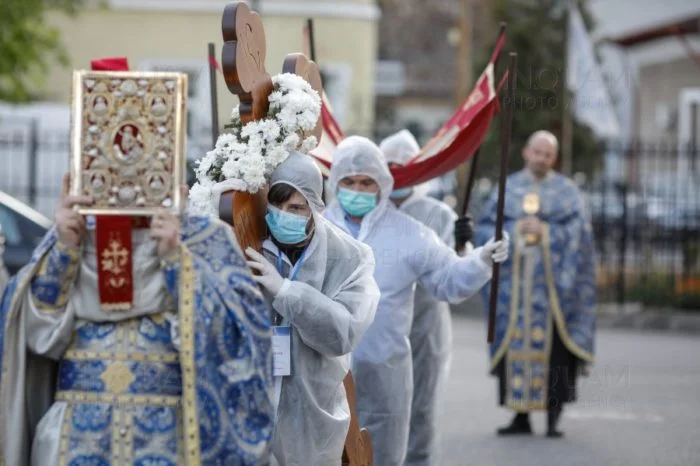
As the current pandemic unfolds around Easter, it comes as no surprise that churches plan to provide aid and a hermeneutical response to our plague-ridden societies. Citizens look in tradition for an anchoring to a world that had not lost its coherence and structure yet. Two particular examples whereby the performance of rituals and tradition has been reinvented during the Easter time are Czechia and Romania. In the context of Central and Eastern Europe, Czechia and Romania are two different countries in terms of ecclesiastical adherence, with the first being Catholic, while the latter being Orthodox. While the Czechs trust in religious beliefs is one of the lowest in Europe, i.e., 29%, Romanians exhibit one of the highest, i.e., 95%.
Nevertheless, as both Churches took the initiative during Easter, both countries’ Christian communities tuned in on social media, radio and TV to see how tradition is still kept under the new auspices. Rituals and traditions had to be constrained to the privacy of the household, losing the performative power of the collective act. Heretofore, we present two cases with two different sets of traditions, which are accommodated during the COVID-19 pandemic. The first endeavor sets to explain the importance of tradition in Czechia and how this is mediatized by the state and political elites, while the second will explore the dynamics of ritual in Romania.
The Czech Easter is about whipping and alcohol… but also about the Resurrection
For an average Czech, Easter traditions encompass a syncretic mix of folk customs and superstitions structured along the Catholic calendar and peppered with Christian symbology (e.g. eating ram-shaped cakes, the ubiquitous pussy willows – a substitute for Palm Sunday’s palms in Central and Eastern Europe). During the last 15 years, according to a longitudinal survey, only a quarter of Czechs have regarded these dates as the most significant Christian celebration, with a similar proportion declaring church attendance during the holiday. The majority of people commemorate during Easter the arrival of Spring or, simply, a handy bank holiday meant for one’s own nurturing and socialising.
This year, the strict measures imposed to contain the Covid-19 pandemic meant that religious services had to be conducted remotely. While the so-called hobby markets and bycicle shops were allowed to re-open during the holiday (resulting in aglomerations and a 61% increase in sales compared to the same period last year) , the country’s chief hygienist reckoned that churches would have posed a higher health risk since attendance to a service at a church lasts longer than a purchase at a hobby market [yet, does it?].
All things considered, Czech state authorities repeatedly reminded citizens the need to avoid gatherings and collective activities in the run-up to the Easter weekend. There was one popular tradition, practised on Easter Monday, which seemed of special concern in the warnings – the pomlázka.
Pomlázka is the name of a traditional whip braided from willow twigs with which men chase and lightly whip women on the back of their legs and buttocks around town while singing carols. In return, they receive painted eggs and alcohol from women. This fertility ritual is practiced, in its different forms, by about three fifths of the population. The post-1989 Czech Catholic Church has been often ambivalent about the practice. While the late Prague Archbishop and cardinal Miloslav Vlk, admitted to indulge in the whipping 20 years ago, liberal theologians and feminist religious circles have condemned its patriarchal spirit and its promotion of gendered violence more recently. The main cleavage in between those who tolerate the practise or not, lays not so much on its perceived profanity, but rather on the support or rejection of its conservatism.
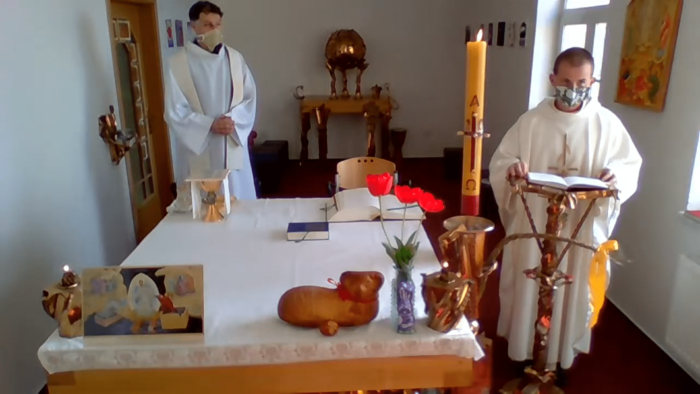
On 6 April, the Minister of Interior and head of the Central Crisis Staff leading the coronavirus response, Jan Hamáček, was unambiguous: the singing of carols around town (with the pomlázka) was clearly prohibited this year. Every major Czech newspaper ran a story about how this year the practice would not be taking place. However, some high state representatives still found in the whip a powerful symbol to communicate with the nation.
The main national political parties wished everyone a happy Easter on social media by emphasising the tradition of decorating eggs, reporting how they spent time with family or reflecting on the religious dimension of the festivities. Yet, for the leader of the most succesful Czech political movement (ANO), the prime minister Andrej Babiš, pomlázka is the very raison d’être of the holiday. Despite surprising everyone by reading a small prayer in parliament last month, Babiš opened his Holy Thursday address to the country by describing the essence of Easter as a rather secular affair:
“It is Easter, the festivity which we all love. The braiding of the pomlázky, the colouring of the eggs; the visits to the family, close ones, friends. Plenty of food and drinking, and, most importantly, whipping girls with the pomlázka so they do not dry up, and to do some proper drinking. This is how it should be.
This is how it always has been. That is how I remember it to be when I was a boy and throughout life. This is the Easter we know. It is also the most significant holiday for all (sic!) believers. A celebration of new life, the Resurrection, a holiday of hope”.
The function of the whole traditionalist speech was to appeal to citizens’ responsibility by reminding them that this year they should stoically deprive themselves from these sort of enjoyments. Of course, many Czechs are far from seeing whipping and inebriation as the foundations of Easter, and Babiš definition of the nation lacks space for people from creeds other than Christianity who live and can legally live in Czechia.
A few days later, Babiš stole the show by prematurely releasing a video on non-institutional social media accounts on the eve of the ‘pomlázka day‘. In the opening, we see the premier’s wife being chased by Babiš, who is holding a two-meter-long whip (‘social distance’ pun). The video was widely shared and referenced, even among his regular critics, most likely due to its cryptoerotic machoist imagery, which showed the billionaire as the Man of the people.
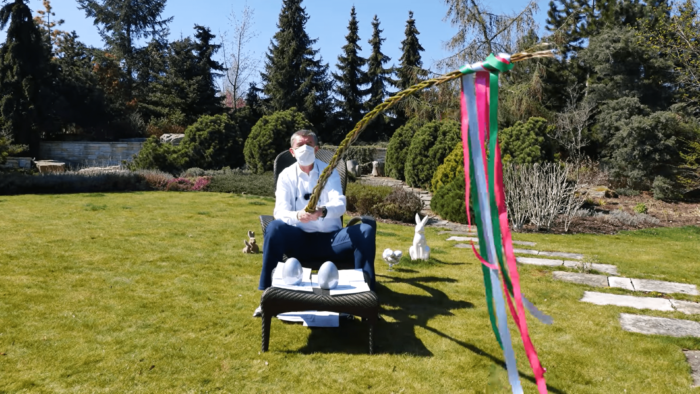
Other institutions also used the pomlázka for comic relief. In a video by the Czech police four policemen run excited with their pomlázky to whip a policewoman who, playing the role of the authoritative mother [rather than a metaphor for ‘consent’], frustrates their urges by confiscating the pomlázky and lecturing the audience about the need to stay away from this type of fun this year. In order for the joke to function, the policemen walk away from the scene in disapproval, rather than joining their colleague in her address, ironically concluding with the sentence “we are in this together”.
What does the loss of this year pomlázka mean? In practice, not much. Apart from a few reported violations, fears of a massive display of disobedience by drunk whipping hordes were not met. The police did record a 50% increase in reported misdemeanours over the weekend (with above-average temperatures), mostly infringements of the Covid-19-related security measures like gatherings (often around alcohol) or excessive leniency in the wearing of the compulsory face cover.
Nevertheless, the fixation with the pomlázka in political and institutional communications opens a series of interesting questions. Who is willing to hold it as a communication tool and why? How do different sectors of the relatively small Czech Catholic church reconcile with this rite? What role can the pomlázka have in building up (or perpetuating) a certain kind of Czech identity?
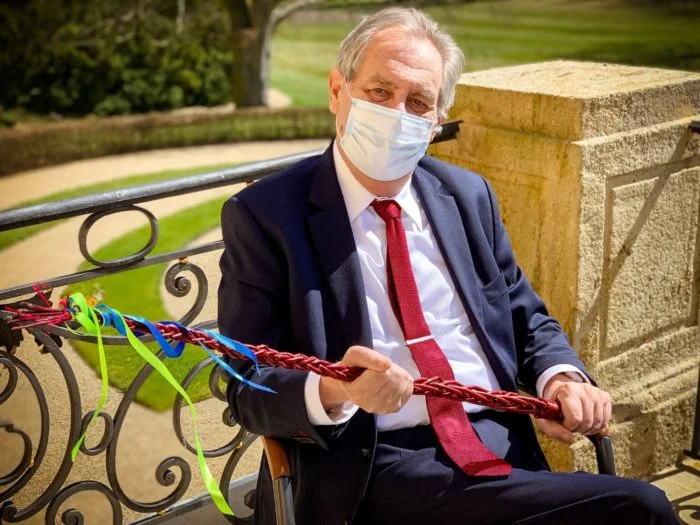
The reinvention of Easter rituals in Romania during COVID-19
Heretofore Easter, which was celebrated on April 19, the influential Romanian Orthodox Church (BOR) pursued to comfort its flocks, who account for 87% of Romanians, through a plethora of rituals that included the transportation of relics through the cities or splashing the streets with Holy Water. Elsewhere, clerics incorporated traditional remedies taken from the folk culture. The priests recommended the faithful to sip Holy Water using silver spoons every day. The high prelates of the church pigeonholed such methods as killers of the virus. Their initiatives were received affectionately by the public. Other condemned them.
As the numbers of infections and death grew in Romania, the government imposed tighter restrictions, which prohibited churchgoers from attending sermons. This decision was received with hostility by some priests who, despite curfews, invited the faithful to church. Others even performed the holy communion with the same spoon on countless of churchgoers. Despite health workers denouncing such acts, other priests followed suit. Some high prelates, like the controversial Archbishop of Tomis (Constanta county) Teodosie, blamed the authorities for forcing them to close churches and saying that ‘the virus cannot be taken though prayer’.
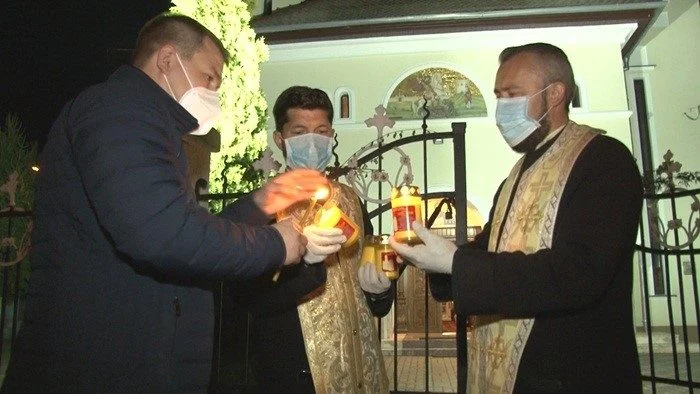
Contrarywise, the Catholic clergymen, who celebrated a week before the Orthodox Easter, urged their flocks to be rational and stay at home for their family’s sake. After several epidemiological investigations discovered that funerals helped spread the virus around communities, BOR started to back down. However, some priests from Romania continued to give communion, using the same spoon for old people and youths. In light of these events, police fined the priests and started investigations.
If the church cannot be reached, the church comes to the faithful, or so agree some priests from Iasi county, who went around their communities and gave communion to the people. Eventually, after one priest and some of its companions were tested with COVID-19, the church started recommending its clerics to abide by the authorities rules. What might have sounded as institutional compliance, eventually, emerged as a manner of reinterpreting and adjusting the performance of rituals during Easter.
On April 14, the Interior Minister of Romania, Marcel Vela, announced during a press conference that he reached an agreement with the Patriarch of BOR, Daniel, to amend the previous military ordinances, which forbade people to attend mass. This agreement assumed that churches were allowed to receive a limited number of faithful during the Saturday Mass. Besides, the police officers were designed to help church volunteers deliver the Holy Light. What initially can be interpreted as a political agreement between the liberal administration and the Church for the coming local elections, whereby priests are becoming political agents, this protocol, eventually, ignited the public opinion in Romania. After massive outcries from health workers, police unions, and president Klaus Iohannis, Vela refrained from moving forward with the agreement, and forbade churchgoers attending mass. Once again, BOR proved how powerful and influential became after the fall of Communism in all structures and realms of the Romanian society.
The rebuff received from the health workers and opinion leaders of the Romanian society made BOR reassess its performance design of rituals under the strict lockdown imposed by the authorities. In its place, the Holy Light and the blessed bread were intended to be delivered solely by Church volunteers and priests, while people needed to wait within the premises of their homes to receive them.
The logistics of the ritual were communicated to the faithful via television and the internet. The latter realm, which in the past was despised by the high-prelates who accused it of accommodating anti-Christian attitudes, soon morphed into a darling of the Church during this epidemic. The Romanian Orthodox church realized that the symbolism of the rituals could be carried through the screens of every phone and laptop with an excellent connection to the internet. The performance of the rituals specific to the Orthodox Easter required two days. During the Good Friday and Saturday, Orthodox priests and volunteers rumbled through the streets of Romania to deliver the blessed bread to the faithful. Even the religious attire was tailored to include masks and gloves.
On Saturday 18, the Holy Light arrived in Bucharest from Jerusalem by plane. The third phase of the ritual performance begun. Upon arrival, a fleet of airplanes and a horde of vehicles were waiting to receive the Holy Light and carry it to all corners of Romania. In less than five hours, the light arrived in almost all parishes of Romania.
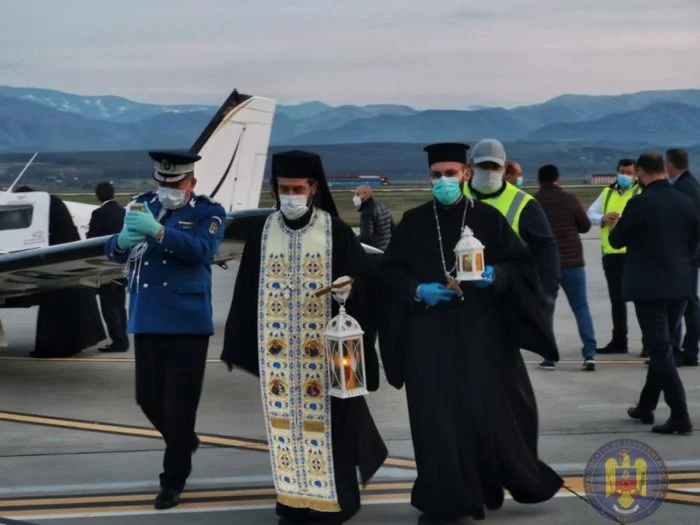
After receiving the light from its air fleet and road caravans, the priests along volunteers began sharing around their communities the much-coveted religious remedy for their troubled hearts. Along with the cohorts of priests and volunteers, the media interviewed the visibly emotional people. For many of them, the press found out that this act was a much-needed hope in these times of tribulation.
By evening, almost all the faithful received the light. At 24:00, the patriarch and the high prelates of the Church began the last phase of the ritual. The usual image of the patriarchate building packed with legions of faithful became a distant memory. Instead, the technical equipment which was used to live-stream the mass and the speech of the patriarch Daniel filled the empty building.
Later in the evening, on social media, a conspiracy theory begun mingling around people. Scores of people who were live streaming on Facebook started to tell others not to eat the holy bread because it was poisoned with the coronavirus. How this conspiracy appeared, it is still not known by the authorities. Elsewhere, some people violated the quarantine rule and went out to ignite the traditional oak bonfire. They, too, began live-streaming their deeds on social media. Not only their Facebook friends were the only people who watched their performance of the ritual, but also the police who disturbed the proceedings.
One more year, the logic of tradition overcame the mundane obstacles
In the end, what we know for sure is that diseases and natural catastrophes have always touched upon people’s life. Conspiracy theories and divine punishment are some of the tonics people apply when confusion outplays well-ordered societies. Apart from elucidating the maladies with applied logic, one feature that keeps people comfort during epidemics is faith, as well as the performance of rituals and traditions.
All in all, the fact that tradition anchors us to a certain past and harmonious order is very useful at a time when the future is very uncertain. In Czechia, at the end of the day, the people kept the spirit of Easter within the privacy of their households. The political elite made sure, in turn, to communicate via media that the tradition is being kept (somehow) alive for another year, thus making sure that its annual occurrence remained as part of the nation’s collective consciousness. Contrarywise, in Romania, the church flexed its influential powers before the government and assured its flocks that the rituals will be fulfilled. Herein too, the people kept the spirit of Easter within the safety of their households, though some paid huge fines for daring to perform their own version of the Easter rituals.